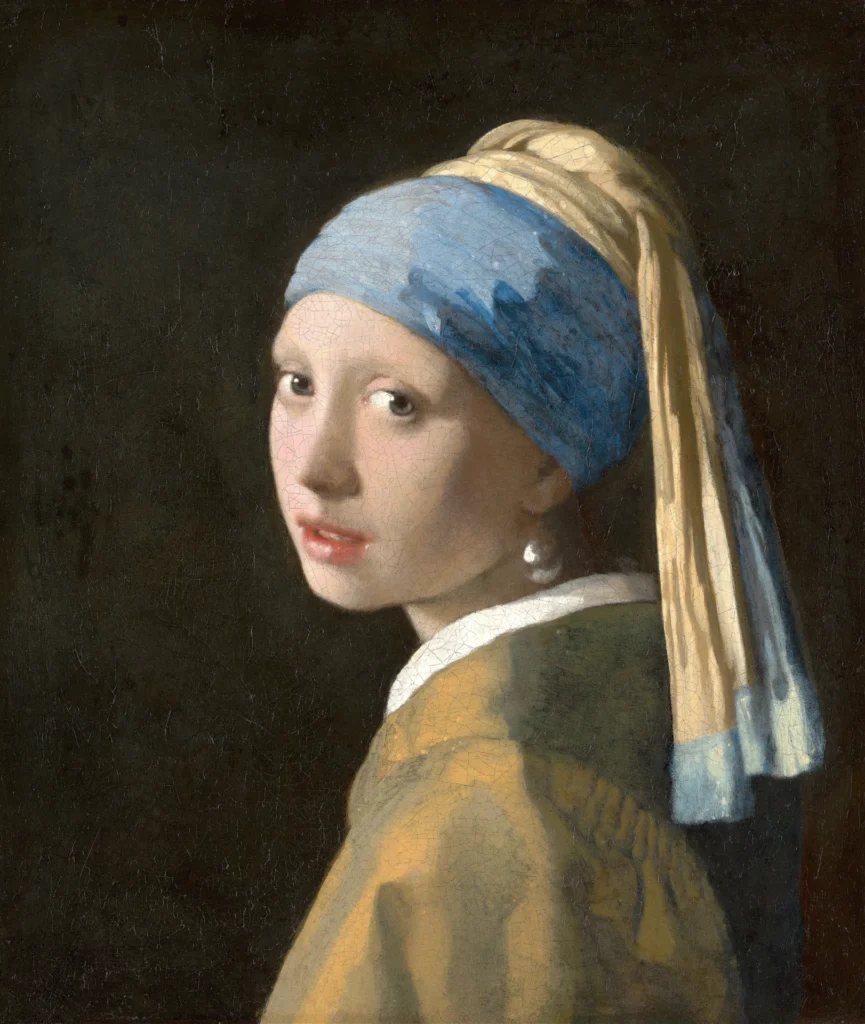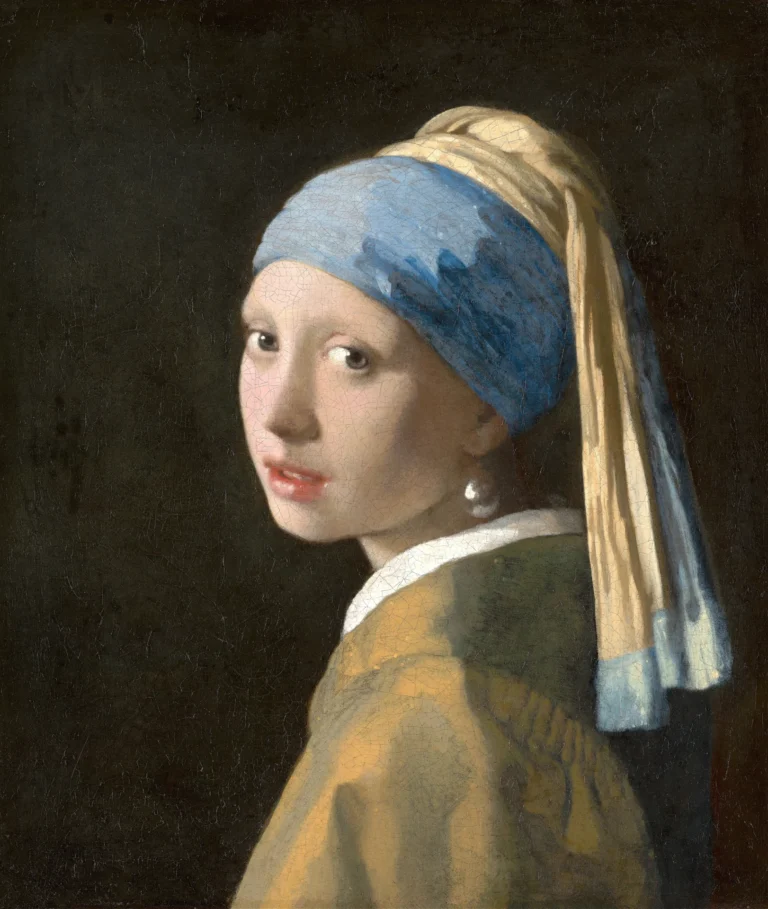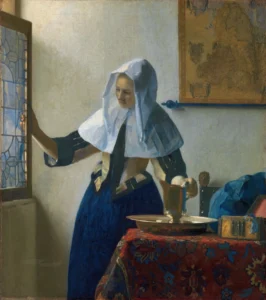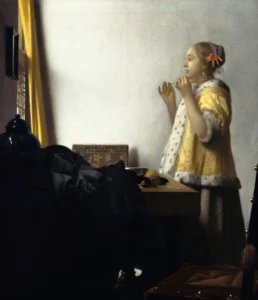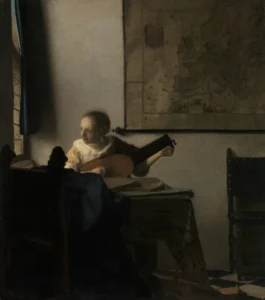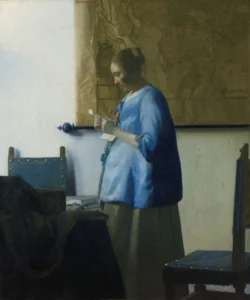Girl with a Pearl Earring (1665)
Created by renowned Dutch painter Johannes Vermeer around 1665, the Girl with a Pearl Earring is considered a tronie, showcasing an idealized young woman adorned with exotic dress, including a striking blue and gold turban. Measuring 44.5 cm x 39 cm, this oil on canvas painting captures Vermeer’s exceptional use of light and shadow, intriguing viewers with the girl's enigmatic expression and the focal point of her large pearl earring. Its impact is such that it is often compared to the revered *Mona Lisa*. The painting currently resides in the Mauritshuis museum in The Hague, Netherlands.
Year 1665
About the Artwork
Crafted during the Dutch Golden Age, Girl with a Pearl Earring encapsulates Vermeer’s ability to capture the essence of the human experience through his meticulous technique and refined use of color. The identity of the girl remains a mystery, adding to the painting's allure. Speculations suggest she might be Vermeer's daughter; however, she was likely intended to embody an idealized figure rather than a specific person. The work's conservation efforts unveiled hidden details, affirming Vermeer’s original vision and further solidifying its status as a timeless masterpiece.
Did You Know
Liked what you see? Add it to your collection.
Enjoyed reading? Share it.
... continued
Artist and Period
The painting is the work of Johannes Vermeer, a Dutch painter known for his meticulous and detailed style, who was active in the 17th century.
Type and Classification
Girl with a Pearl Earringis classified as a tronie, a Dutch term for a character or type of person, rather than a portrait. Tronies often featured idealized faces or exaggerated expressions and included exotic elements, such as the turban and the large pearl earring in this painting.
Subject and Identity
The subject of the painting is an unknown young woman. There has been speculation that she might be Vermeer's eldest daughter, Maria, but this has not been widely accepted. The painting is meant to depict a generic young woman in exotic dress, rather than a specific individual.
Composition and Details
- The painting measures 44.5 cm x 39 cm (17.5 in x 15 in) and is executed in oil on canvas.
- The girl is depicted wearing a blue and gold turban, a gold jacket with a visible white collar, and a very large pearl earring. Her face is softly illuminated, with a delicate interplay of light and shadow that brings her features to life.
- The background of the painting appears dark, but modern imaging techniques have revealed a green curtain behind the girl. The girl also has delicate eyelashes, which may be hard to discern.
Use of Light and Pigments
Vermeer's mastery of light is a notable aspect of the painting. He used light to create form rather than line, and the reflection on the girl's lips and the pearl earring shows his concern for representing the effect of light on different surfaces. The painting features costly pigments such as ultramarine blue (derived from lapis lazuli) for the headscarf and a red pigment derived from an insect for the woman’s lips.
Conservation and Restoration
During conservation treatments, particularly in 1994 and a two-year investigation starting in 2018, several details were uncovered. These include the original green background, the presence of eyelashes, and the removal of a flake of loosened paint from the pearl's surface. These restorations have helped to reveal the painting as Vermeer intended it.
Symbolism and Impact
The pearl earring is a focal point of the painting and symbolizes purity and beauty. The girl's enigmatic expression and direct gaze have led to comparisons with Leonardo da Vinci's Mona Lisa. The painting's technical prowess and evocative ambiguity have elevated it to a revered status in the art world.
Girl with a Pearl Earring is now permanently housed at the Mauritshuis in The Hague, Netherlands, where it remains one of the museum's most celebrated works.




